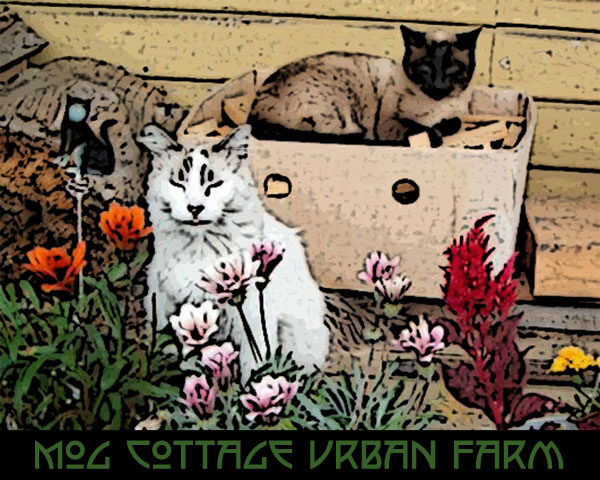 |
| Blueberry bed turned graveyard. |
|
Halloween at Mog Cottage is always exciting. We decked the place out, converting our planting beds into makeshift graves with all the Styrofoam molded headstones, bones and ghouls we could manage to scrounge up at the Dollar Store and the Used Food Store (What Roland calls the Grocery Outlet). During Halloween night, we place lighted candles under each head stone and up the front steps to light the way.
Enough trick-or-treaters flooded our doorway to scarf up most of the candy, but not before we managed to OD on the stuff ourselves. Although Roland and I are pretty fussy about our chosen sugar delivery systems, the problem is we buy what we like and a lot of it, in anticipation of the costumed hoards of rug rats. On top of that, we buy it well in advance of the day it goes out the door because we want to make sure that what we want will be on the store shelves. When it comes to certain candy, neither of us has a bit of will power. Deep down, we probably don't care. It's only once a year, right?
So, Roland and I scarf on sugar for a good week prior to Halloween,spend another week finishing off the leftovers, then another few days in withdrawal. Even our dog joins in, sneaking tootsie pops out of the bowl when we're not looking. We find sticky, artificially flavored corn syrup balls behind the sofa cushions among the stashed chewies. Yesterday, Roland discovered one of the confectioners thoroughly stuck to the side of our cat, Vinnie. He's now missing a sizable clump of fur trying to dislodge the thing.
Now, I could attribute the theory that these fall/winter holidays are timed right to a candy industry conspiracy when carbohydrate cravings in many of us escalate. These companies know that seasonal darkness and it's ensuing depressive state drives people to pump up the dopamine levels among their grey cells. What easier way to do that than with a culturally accepted legal drug of choice: sugar. So the Halloween holiday often becomes fast, cheap and out of control. In fact, I consider Halloween a kick-off to the confectioners binge that continues until after Easter. People don't need candy much after that because the sun is back and people see the light. The next food binge after October 31st, of course, is Turkey Day. At least we have 3 weeks to come down from this holiday before the food fest.
 |
| Front porch - pretty scary |
In the meantime, it may take that long to take down all the decorations. Hmmmm. The hanging artificial spider webbing strung across the front porch rather suites the place, don't you think?
























